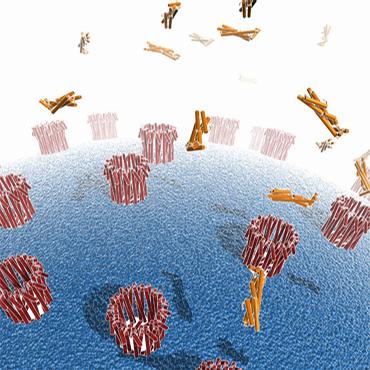Team:Paris/Addressing overview
From 2009.igem.org
Christophe.R (Talk | contribs) |
m (→A. G3P) |
||
| Line 25: | Line 25: | ||
==='''A. G3P'''=== | ==='''A. G3P'''=== | ||
| - | + | Direct link to our part : <partinfo>BBa_K257001</partinfo> | |
<html> | <html> | ||
Revision as of 12:34, 30 August 2009
iGEM > Paris > Adressing > Overview
Contents |
Overview
Constructions :
A. G3P
Direct link to our part :
B. ClyA
We work on the cell-cell communication using vesicle. that’s why we have to find something to track our vesicle, but also send a protein (or anything witch create a signal) in this vesicle, in order to make a signal transduction. ClyA seems to have an interesting ways to success in these functions. Let's see more about it and found why.
B.1. Let's introduce it
ClyA was found in pathogenic and non-pathogenic E. Coli strains, in Salmonella enterica serovars Typhi and in Paratyphi A.It’s an alpha-PFT for Pore Forming Toxins. PFTs are potent virulence factors class starting in a soluble from to a outer membrane-integrated pore. They exhibit their toxic effect either by membrane permeability barrier destruction or by toxic components delivery through the pores. PFTs can be subdivided into two classes; a-PFTs and b-PFTs, depending on the suspected mode of membrane integration, either by a-helical or b-sheet elements.
Moreover the ClyA gene in E. Coli K-12 is silenced in non-pathogenic strains by nucleoid protein H-NS which bind clyA sequences in the promoter region. We decided to work on this protein 'cause of its hight expression in OMV.
The ClyA water-soluble form (monomer form) is a bundle of four major a-helices (aA, aB, aC and aF). Monomer form have :
- a small surface exposed
- a hydrophobic B-hairpin at the head end of the structure located in a predicted transmembrane region witch have an important role in membrane association and trigger the conformational switch.
- the N and C terminal at the tail end.
For the lipid-associated ClyA (promoter form), it's organized as a three-helix bundle (aB, aC and aF) and form an oligomeric pore complex composed of either 8 or 13 ClyA subunits.
In the assembled pore, all helices (except alpha-G) contribute to protomer–protomer contacts. Each helix of the twisted three-helix bundle contributes to both interfaces. A network of 25 hydrogen bonds and 13 salt bridges indicates tight and specific promoters association. These specific interfaces do not exist in the soluble ClyA monomer, indicating that conversion of ClyA to the protomeric form has to precede oligomerization. So, monomeric Cly A switchs to protomeric form when B-hairpin are associated in the membrane.
B.2. ClyA pore formation
ClyA is inserted into the outer membrane as inactive monomers. Then they are released and embedded in OMVs, at this point they are converted into an active form. During the host fusion of the OMV the functional ClyA pore is inserted, and then, deliver the membrane active virulence factors into the host cell. So ClyA don’t lysis the bacteria which produce it.
the step are as follow:
- The amino-terminal helix (aA) of each protomer is protruding into an iris-like arrangement forming the constriction at the top of the pore.
- Closing of the pore will lead to compaction and buckling of the amphipathic helices. As a result, these helices will be pushed upwards wedging, rather then ‘punching’, a hole in the membrane.
- Once formed, the pore opening is maintained by the iris-like interlocking of the amphipathic helices.
 "
"


